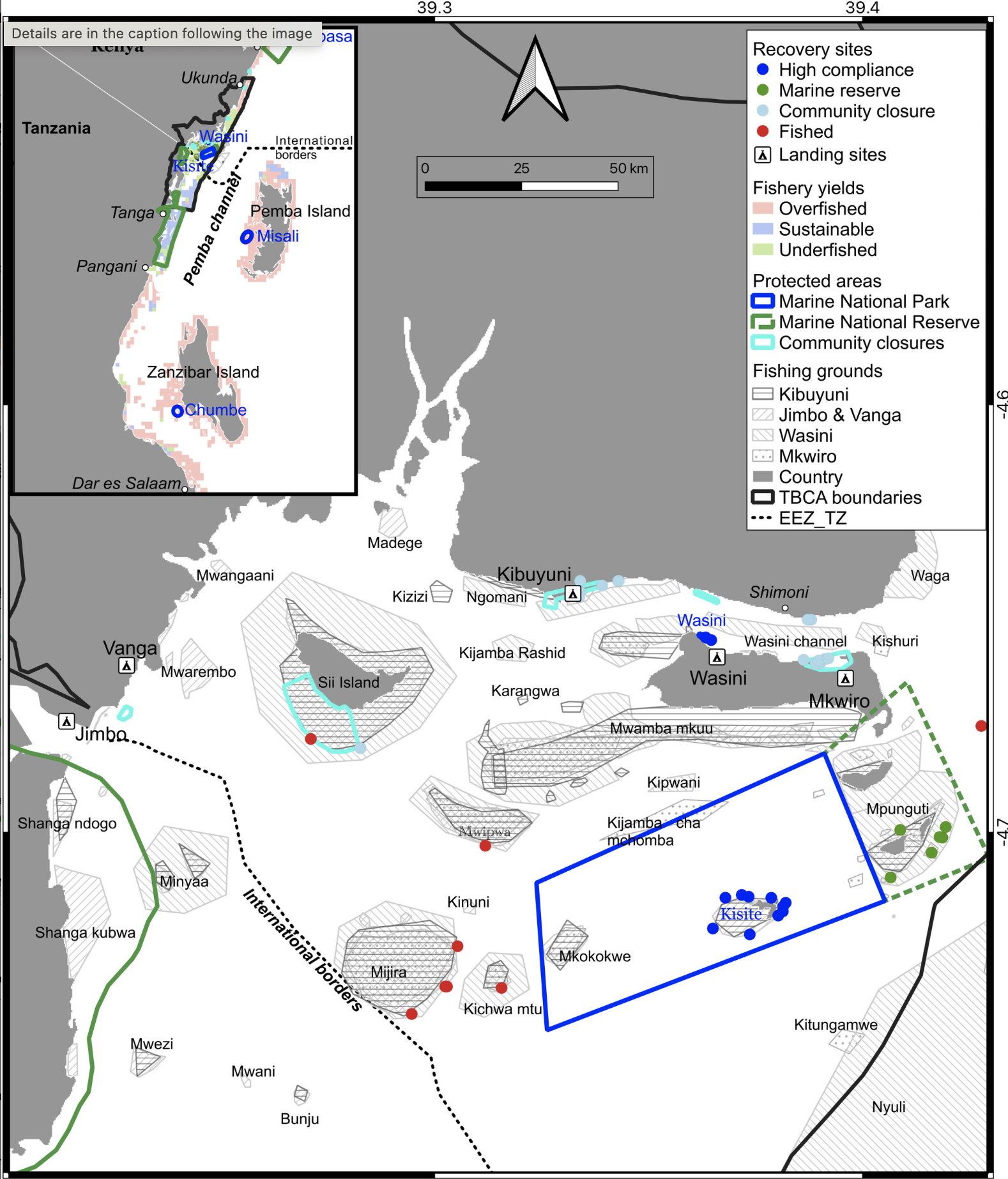
Authors: T. R. McClanahan and J. K. Kosgei
Abstract
Reducing resource depletion and promoting ecosystem-based management are considered key climate change adaptation policies. Therefore, the resource status of an identified climate refugia in a semi-enclosed bay on the Kenya–Tanzania border was evaluated for sustainability. Both fisheries stock and catch assessment methods found low production and excess effort. Stock recovery in closures (up to 45 years) determined the best-fit r and K values, which established a maximum sustainable production (MSY) of 2.98 ± 0.45 (SEM) tons/km2/year. Stock estimates in the bays' fishing grounds indicated that biomass was below the MSY and predicted to produce 1.8 ± 1.0 (SEM) or 1.1 ton/km2/year below the optimal MSY. However, landed fish at five studied fishing villages varied greatly from 0.22 to 2.9 tons/km2/year. MSY in the refugia was therefore considerably lower than estimates in nearby ocean-exposed locations, which has been estimated at 5–7 tons/km2/year. Therefore, low to modest capture rates of fish will be required to allow the recovery needed to achieve sustainability and restore the refugia's ecology. The refugia's highest stocks and near-MSY yields were captured in the national reserve. Therefore, broader implementation of the reserve's gear-restriction policies should restore fisheries. High spatial variability in yield patterns indicate interactions between fisheries management, compliance, trade connections, and governance. In climate refugia, reducing cumulative impacts will require knowing and managing for lower fisheries production limits.
Read the full publication at https://doi.org/10.1111/csp2.13043.
Published November 9, 2023

